
The first image shows a fairly normal-looking Lazuli Bunting
singing in western Tarrant County (west of Fort Worth), Texas
on May 12, 1999 (photo by Patty Williams). There are about a dozen
records of Lazuli Bunting from Tarrant County, all in the period
30 April - 15 May, and multiples have been noted (three males
in the same tree on May 4, 1991; a male and a female 200 yards
apart on 12 May 1997); none stayed more than 2 or 3 days:
On closer inspection, the wingbars look thin for a spring
Male, but the orange wash of the chest looks okay, and it extends
lightly onto the flanks:
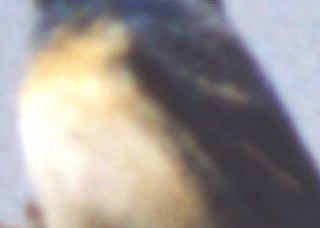 |
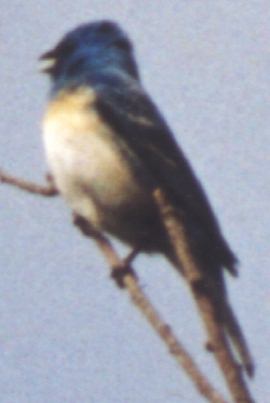 |
This bird was found by Patty Williams, and over the course of
the next two months, she birded the same location (Holiday Park
campground at Benbrook Lake) a number of times, and regularly
she saw the above bunting singing from one of four bare trees.
She often saw Indigos nearby, including a few females, but no
other lazulis. On July 6, Martin Reid found out that the bird
was still being seen, and visited the site on July 13, when he
took the following photos:
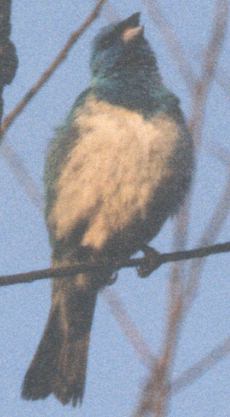
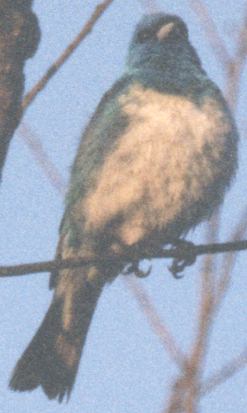
in the next image below, the bird has raised its leg behind the
wing to scratch its chin:
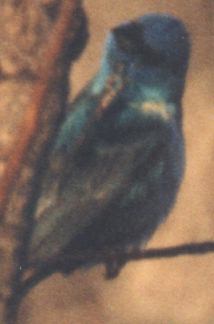
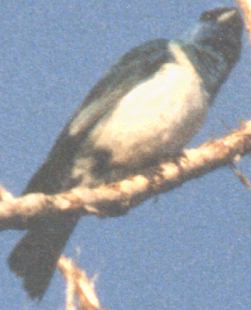
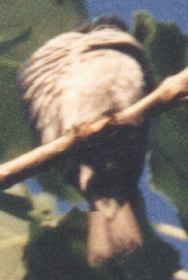
- in this last image, note the white underwing coverts - seen
well in the field.
Reid's initial reaction was that the bird was not a pure Lazuli
bunting, due to the virtually-complete lack of orange on the underparts
( a tiny hint was visible immediately below the blue bib), lack
of white wingbars (thin pale tips to the coverts were present,
but almost invisible), presence of blue patches on the vent, and
a judgement that the blue of the upperparts was slightly too dark.
On comparing his photos to that from May 12, Reid became uncertain
about this bird, as back then it seemed to have a prominent orange
breast and wingbars (but already these were thin-looking) - so
what is it?; please email
Martin Reid.
Reid comments that this bird was clearly defending a territory
on July 13: every c. 10 minutes, it would fly in from the same
direction, sing five or six times from each of four dead trees,
then fly off to again (to an unreachable area); two male Indigo
Buntings were defening adjacent territories (with two more in
earshot), and all the birds seemed to have that tolerance shown
by territorial birds with well-established boundaries. Update
- July 14: Reid has now obtained a good series of recordings
of this bird (plus nearby Indigos) and was mistaken with
his earlier comment about the similarity to Indigo; the song is
almost identical to that of the Lazuli Bunting on
the Peterson Western Bird Songs cassette (Side 3A). On two occasions
the bird responded to a recording of Lazuli song by becoming agitated
and flying in to an overhead perch and looking around in his direction
(and singing vigorously). I have heard that in the zone of overlap,
Lazulis and Indigos maintain interspecific territories, and may
sing each other's song.
While Lazuli is a more-or-less regular migrant through the west-central
parts of Texas, there is only one record of confirmed breeding
for the State: in the northern Panhandle in 1903.
TBRC home page | TOS
home page | Search | Contact
TBRC | Help
Please address comments about our web site
to tbrc@tripod.net.
All original contents copyright, 1997. All rights reserved. .









